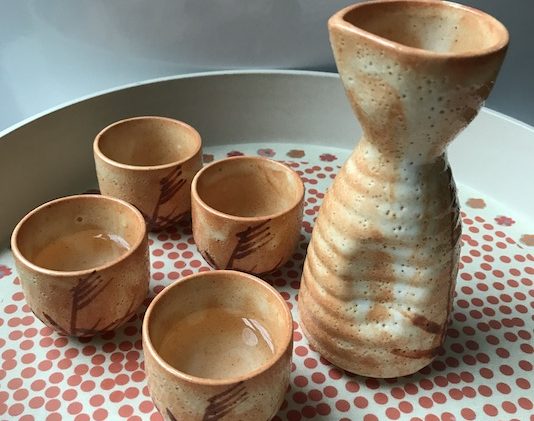Once upon a time, sake was a drink consumed by just a few—typically aficionados of Japanese food and culture. But that’s been changing in recent years.
The rice-based beverage drink has evolved from a ceremonial drink that was most often heated and served in traditional, ceramic cups to a premium spirit that’s enjoyed more like a Scotch or fine wine. Sake is also an excellent base for cocktails.
What exactly is sake? While many people call it rice wine, sake is technically closer to beer, because it’s brewed from fermented grain—rice.
There is a broad range of sake quality and prices. Sake flavors can go from light, floral and delicate all the way up to rich and funky. And while sake pairs well with sushi, it’s also a great match with other Asian cuisines and many Western foods.
GETTING THE GRADES
In brewing sake, the rice is polished or milled (the outer layer is ground away), steamed and then mixed with koji, a mold that grows on the rice and converts starch to sugar. Yeast and water are added, and the fermentation process begins.
The milling process plays a key role in the quality of the sake. The outer layers of the rice contain proteins and fats, and when these are milled away, it leaves the center of the grain, which has more pure starch.
So the more the rice is milled, the higher the grade of the sake. The variety of rice, the quality of the water used and the talent of the brewer are also key in sake production.
While sake is available in many different grades, these are the four most common.
Daiginjo. The most highly polished rice kernels are used to prepare daiginjo sake, which tends to be light and fragrant. At least 50% of the rice kernel is milled away for this grade of sake.
Ginjo. The ginjo sakes are slightly inferior to daiginjos, and have 40% to 50% of the rice kernel polished away. These are higher in alcohol, usually 18% to 20%.
Honjozo. Just about 30% of the rice kernel is polished away for honjozo sakes, so typically some alcohol is added during fermentation. These sakes tend to be dry, medium-light and relatively smooth.
Junmai. Full-bodied junmai sakes are more acidic than the other levels and they pair easily with most foods. Junmai means pure, and these sakes are made from rice, filtered water and the koji mold used to start
the fermentation.
The nigori variety of sake has become popular in recent years. It’s an unfiltered sake, so nigori is cloudy, and tends to be sweeter and more fruity than other sakes. It has a more concentrated, creamy flavor vs. other sakes and pairs well with food.
HOT OR NOT?
Sake is frequently consumed warm in the U.S., but that’s not necessarily the proper or traditional way to serve it. In Japan, sake is sometimes warmed, but only to around 105ºF, according to some experts.
While it’s fine to gently warm sake, many recommend chilling it a bit, to about 50 degrees. A sake that’s served too hot or too cold can cause you to miss some of the subtle nuances of this delicate and intricate beverage.
Another thing to keep in mind: Sake doesn’t improve with age. Sake bottles or cans are stamped with a shipping date, and should be used within two years of this date. It should also be a clear liquid, unless it’s a nigori, so a telltale sign that your sake is past its prime is when it starts to yellow.
A SAKE COCKTAIL
Tao Group Hospitality this past March opened TAO Asian Bistro & Lounge at the Mohegan casino in Uncasville, CT. The 10,000 square-foot, 300-seat Pan-Asian restaurant offers creative craft cocktails and a robust sake program, as well as unique sake cups from Japan.
The Moon On The Water cocktail is a take on the Gimlet and pairs Roku gin, known for its yuzu citrus and sansho pepper notes, with Fukucho sake. The white koji used in the brewing process—overseen by one of the few female brewmasters in Japan—gives this particular sake a bit of effervescence. This highlights the citrus notes and brightens up the classic cocktail.

Ingredients
- 2 oz. Roku gin
- ¾ oz. Rosemary simple syrup*
- ¾ oz. Cold-pressed lime juice
- ¾ oz. Fukucho Junmai Ginjo sake
Instructions
- Combine ingredients and shake.
- Strain into a cocktail glass.
- Garnish with a sprig of rosemary.







